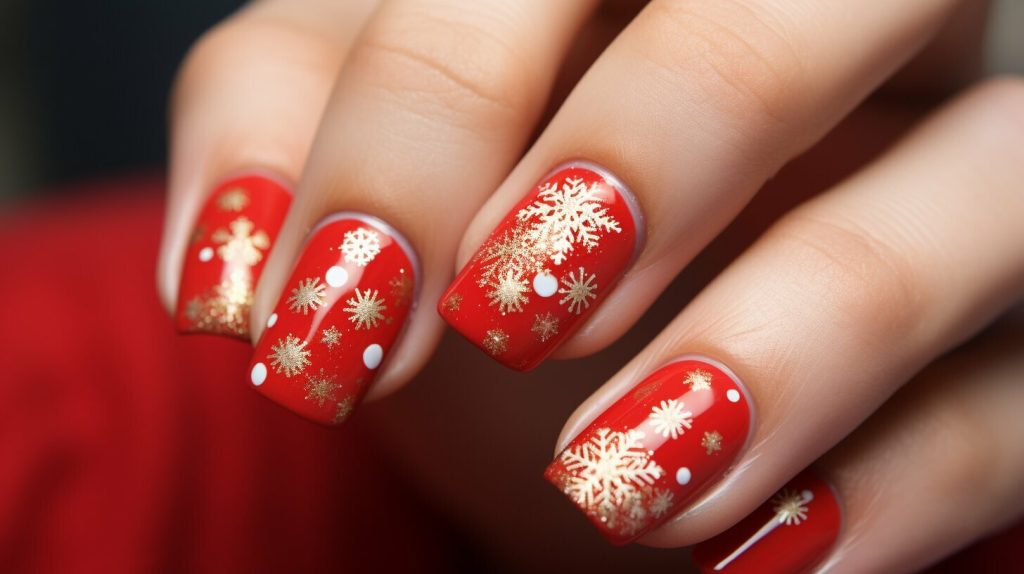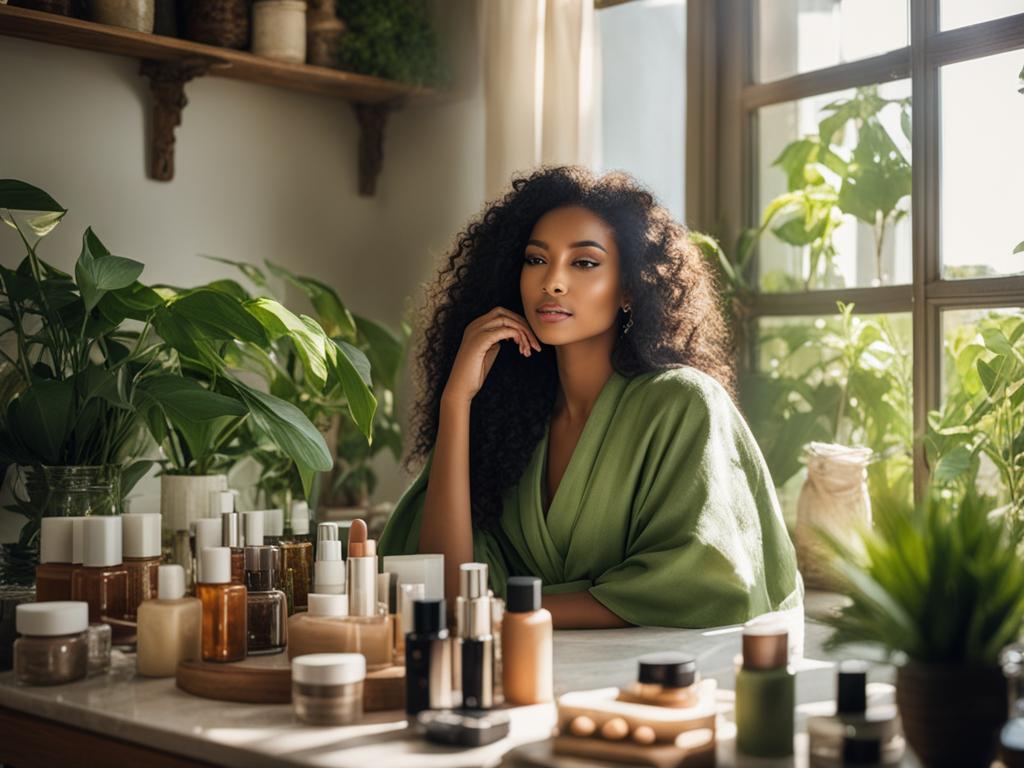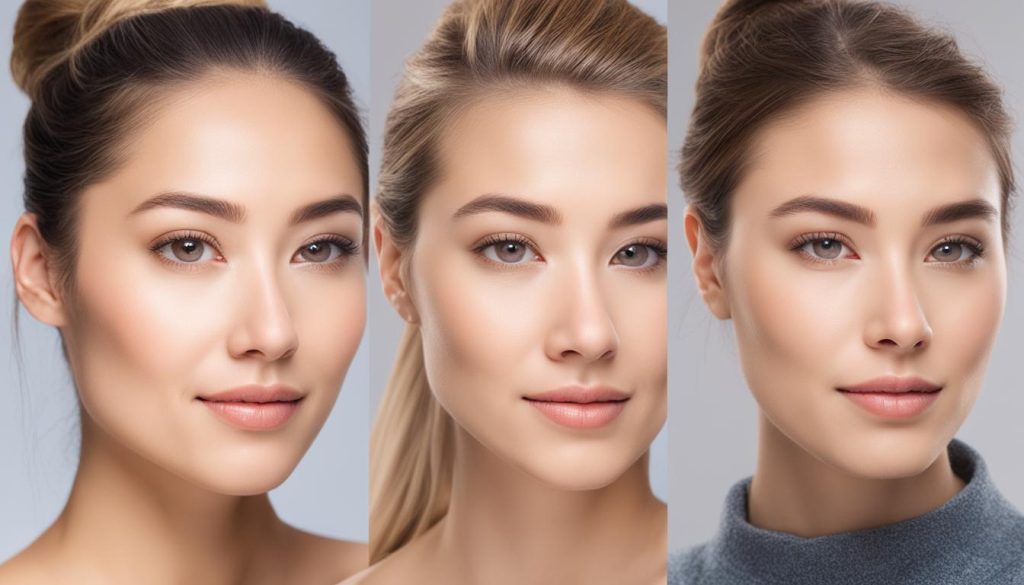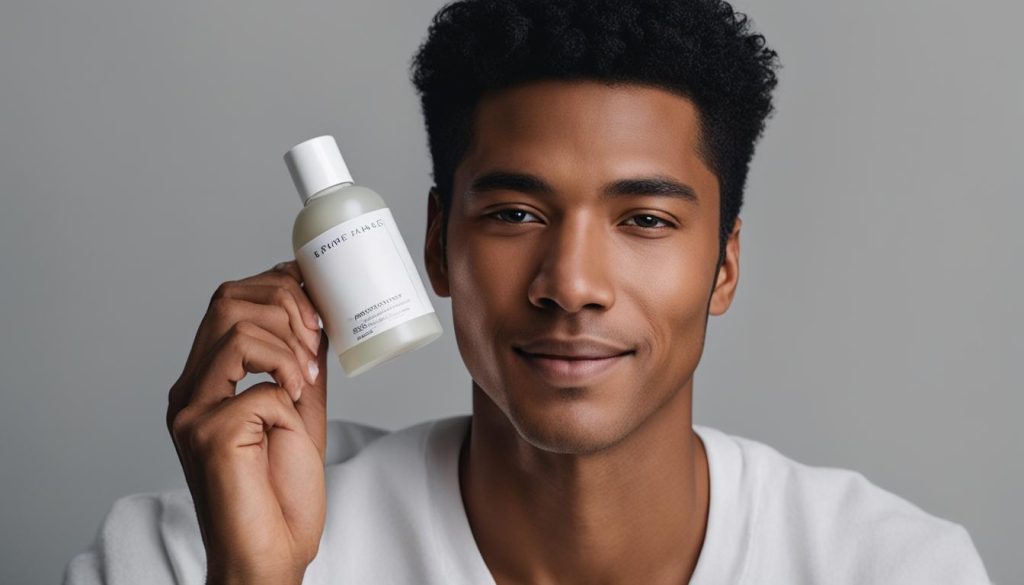As a fervent enthusiast of all things vintage and retro, I’ve always been captivated by the distinctive flare that the 70s fashion injected into the world. The decade stands out as an iconic era where innovations surged across the fashion landscape, leaving us with a rich heritage of 1970s fashion trends. Throughout these transformative years, 70s style wasn’t just about clothing—it was a revolution symbolized by an array of vibrant disco fashion ensembles and the continued appeal of laid-back hippie fashion. Let me guide you through this mesmerizing journey of retro style, as we rediscover the artistic expression and cultural statements woven into the very fabric of the 70s.
From bell-bottoms that danced to the tunes of disco to the elegant wrap dresses that transformed women’s apparel, the era’s attire speaks volumes about the dawn of blend in style and utility. Polyester became a household name, celebrated for its versatile nature, while fashionistas graced boutique stores for the latest ready-to-wear pieces. It was an adventurous time where the norms were challenged, and every day was a scene right out of a Gatsby-esque party. Sit tight as we delve into the past, where vintage fashion was not just born but reborn repeatedly with every sequined jumpsuit and every pair of elusive platform shoes hitting the dance floor.
The 70s Fashion tips
- 70s fashion was a vibrant mix of color, texture, and innovative designs that shaped the era’s style narrative.
- The use of synthetic fabrics like polyester played a significant role in the affordability and accessibility of trendy attire.
- Hippie fashion continued to make its mark with an emphasis on handmade and natural decorations.
- Designers integrated historical inspirations and the spirit of freedom into their work, influencing the mainstream fashion industry.
- The introduction of athletic wear hinted at the health-conscious trends that would take over in the subsequent decade.
- Fashion icons of the 70s, such as Bianca Jagger, drove androgynous and formal trends into new territories.
- Retro style transcended the test of time, serving as a perpetual inspiration for modern fashion sensibilities.
The Colorful World of the 70s Fashion
When I reminisce about the riveting world of 70s clothing, I’m instantly teleported to an era that championed retro fashion and vibrant colors. The 1970s were a time when fashion took bold risks, inviting a blend of psychedelic prints and bold plaids to dance in the limelight. This decade marked a fascinating shift from the understated earthy tones of hippie aesthetics to the all-out glam of disco fever, complete with its scintillating color schemes.
Kids dressed in miniature versions of adult trends, blurring gender lines and highlighting the universal appeal of primary colors and punchy patterns. Daytime apparel embraced the nostalgia of 1940s silhouettes, evolving by nightfall into a scene dominated by the glitz of sequins and velvet, embodying the quintessential vintage style that defined an era.
- Flounced midi-length prairie dresses
- Sequined evening attire paired with strappy sandals
- The electrifying presence of hot pants, merging into twirling dresses
The 1970s fashion palette knew no boundaries, stretching from the ubiquity of polyester to plush fabrics that set the tone for evening extravaganzas. It was a time when creativity in fashion knew no bounds, painting a picture as varied and dynamic as the decade itself.
As I navigate the memories of 1970s fashion, it’s clear that the era was more than just a period; it was a colorful canvas upon which a bold, new world of style was painted. From the schoolyard to the disco hall, the 70s was an open invitation to express oneself in the most vivid hues and prints—truly a colorful world of fashion like no other.
The Gender-Neutral Appeal: Outfits in the 70s
When I reminisce about the 70s, a vibrant image of unique expression and gender-neutral fashion instantly comes to mind. This was a path-breaking era where rigid gender lines were blurred, and everyone was free to dip into an eclectic wardrobe of 70s outfits. The fashion scene was reinvented with a bold declaration that style has no gender.
From Bell-Bottoms to Platform Shoes: Unisex Trends
In those days, you could see bell-bottoms swaying in the streets on just about everyone. Women paired them with chic tank tops while men went for flamboyant satin shirts – all complete with a classic pair of platform shoes. These iconic shoes were more than a fashion statement; they were a leveler, accompanying an array of ensembles from graceful maxi dresses to playful mini skirts. It was the era where unisex fashion really took hold, and I can’t help but marvel at how those trends have remarkably circled back into fashion today.
Disco Fashion vs. Bohemian Style
Disco fashion and bohemian fashion were almost like two different genres of music from the same album. The disco scene was high-energy, beaming with lycra and velvet that shimmered through the night. Glorious accessories like feathers and sequins were the exclamation points to these disco outfits. Meanwhile, the bohemian style sang a more earthy tune, with flower prints and free-spirited silhouettes that carried the essence of the 60s hippie movement. Both these styles made the 70s a spectacular decade for gender-neutral fashion.
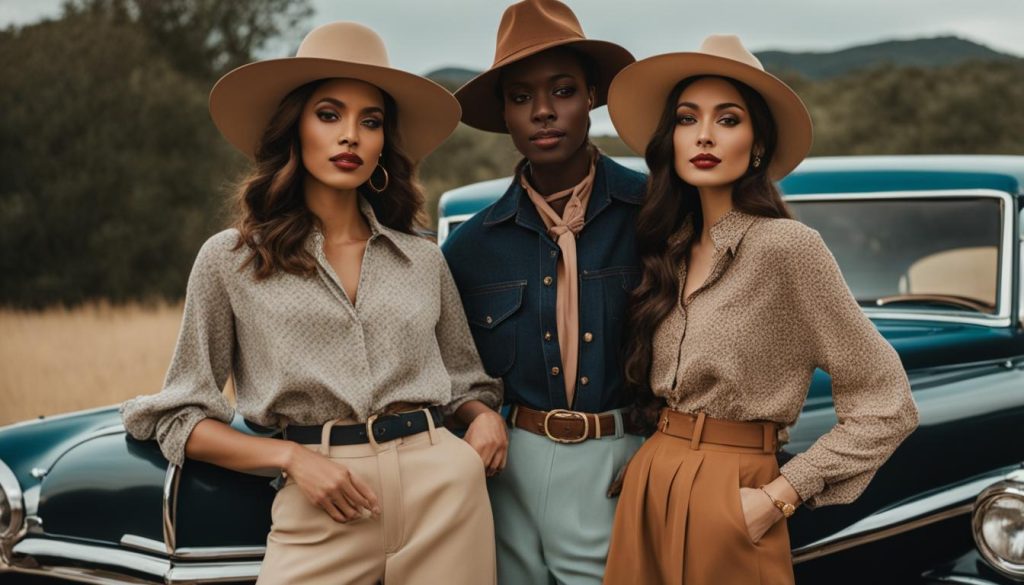
- Bell-bottoms as a unisex staple
- Paisley prints and jumpsuits
- The inclusivity of 70s fashion
As I walk through vintage shops today, I am instantly transported back in time by the sight of platform shoes lined up neatly in a row. It reminds me of how the 70s embraced everyone, and it’s heartening to see that unisex and gender-neutral fashions are having a well-deserved resurgence. After all, fashion is about self-expression, and what better decade than the 70s showcased that everyone, regardless of gender, has a place on the dance floor of style.
Vintage Style Icons of the 70s Fashion Scene
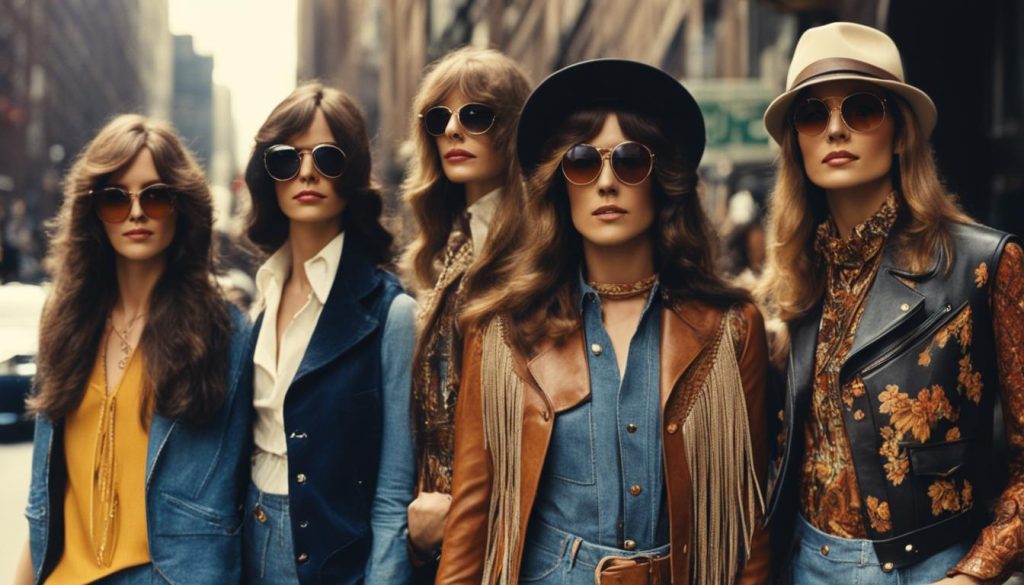
When I think back on the 70s fashion icons, my mind immediately wanders to the trendsetters who defined that tumultuous decade with their unique sense of style. No discussion of vintage fashion would be complete without recalling the legendary Bianca Jagger, who, in a bold white tuxedo, became the epitome of Studio 54’s retro style glamor. Alongside her, Mick Jagger often stood as a beacon of 1970s fashion trends, merging rock ‘n’ roll with luxe fabrics and designs.
Designers, too, left an enduring legacy on vintage fashion, with Halston taking ultrasuede to new heights and shaping the silhouette of the era. Yves Saint Laurent traversed time with his designs, drawing on past eras to enhance the retro style of the 70s. Yet, perhaps none have had quite the same enduring influence as Diane von Fürstenberg, whose iconic wrap dress is as synonymous with the 70s as disco itself.
- Halston’s clean lines and minimalist aesthetic
- Yves Saint Laurent’s impeccable tailoring and adoption of bohemian chic
- Diane von Fürstenberg’s empowering and versatile wrap dress
These style icons were true trendsetters, shifting the public’s outlook on what constitutes fashion. Menswear-inspired ensembles transitioned from being a bold statement to an everyday choice for women’s formal and casual wear. Their impact not only defined the 70s but also etched a lasting blueprint for vintage fashion and retro style that remains relevant to this day.
Hippie Fashion Evolution and Its Cultural Impact
As I delve into the rich tapestry of 1970s fashion, one cannot overlook the vibrant current that hippie fashion brought to the cultural landscape. Embracing the age-old traditions of handcrafted textiles, this movement championed the integrity and individuality found in handmade crafts. The era’s boho fashion wasn’t just a trend; it was an emblem of personal expression and the era’s overarching quest for authenticity. This reverence for artisanal practices wasn’t limited to secluded artisanal enclaves but permeated the high-fashion runways, signaling an intersection where bohemian values met the glittering allure of the mainstream.
Handmade Details: Embracing Craftsmanship
My appreciation for the era’s designs deepens as I explore the intricate handiwork that graced the garments of the time. The use of patchwork, for instance, heralded a nostalgic yet innovative touch to clothing, repurposing materials into new, expressive forms. Crochet and knitting brought texture and depth, imbuing each piece with a sense of care and uniqueness. These embellishments mirrored the cultural impact of a generation determined to interweave their societal ideals with their aesthetic choices. Every stitch and pattern spoke volumes about the individual behind the garment, a personal signature in a world moving towards mass production.
Patchwork, Crochet, and Psychedelic Prints
Furthermore, the psychedelic prints of the 70s were not just a visual phenomenon; they were emblematic of a generation’s voice calling for change and expressing it through vibrant, dizzying color schemes and motifs. These loud, unapologetic prints found their way onto flowing silhouettes of dresses and tunics, wrapping the wearer in a canvas that defied convention. As I reflect on these fashion choices, I see more than clothes; I see a period of profound cultural fusion where every hue and thread was a rebellion, a form of freedom, a segment of the cultural impact woven into the history of 1970s fashion.
FAQ
What defines 70s fashion?
The 70s fashion is marked by a blend of vintage fashion and retro style, showing a clear departure from the conservative dress codes of previous decades. It includes trendsetting 1970s fashion trends like bright psychedelic prints, flowing hippie garments, and glitzy disco fashion ensembles.
What were popular materials used in 70s clothing?
A variety of materials were popular in 70s clothing, including the then-innovative polyester for daily wear and luxurious fabrics such as velvet and satin for party attire. Handmade crafts like patchwork and crochet were also significant in hippie fashion.
How did the 70s fashion embrace vibrant colors and patterns?
The 70s clothing was a canvas for a myriad of vibrant hues and patterns. Psychedelic prints and bold plaids became synonymous with the decade’s vintage style, often found in everything from bell-bottoms to jumpsuits.
What were some of the gender-neutral trends in 70s outfits?
70s outfits broke conventional gender norms with trends like bell-bottoms and platform shoes that were embraced by all. Jumpsuits and paisley prints were also unisex fashion staples, contributing to the decade’s diversity in dressing.
How did disco fashion compare to bohemian style?
While disco fashion was characterized by flashy, body-hugging fabrics like lycra and embellishments like sequins and feathers, bohemian style was more relaxed, favoring earth tones, loose silhouettes, and natural fabrics – reflecting a more laid-back 70s fashion aspect.
Who were some of the fashion icons of the 70s?
The 70s fashion scene boasted icons like Bianca Jagger, who stunned in made headlines with her menswear-inspired attire, and designers like Diane von Fürstenberg, who created the quintessential wrap dress. These trendsetters were instrumental in shaping retro style and inspiring future fashion trends.
What role did handcrafted details play in 70s fashion?
Handcrafted details played a pivotal role in 70s fashion, especially within the hippie movement. Techniques such as patchwork, crochet, and knitting added an authentic, handmade touch to clothing, merging boho fashion sensibilities with mainstream appeal.
Why is 1970s fashion still influential today?
1970s fashion remains influential today because it represents a period of unprecedented freedom and experimentation in style. It introduced timeless pieces like the wrap dress and popularized various prints and color combinations that continue to recur in modern fashion trends.

